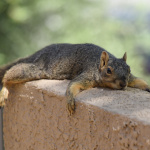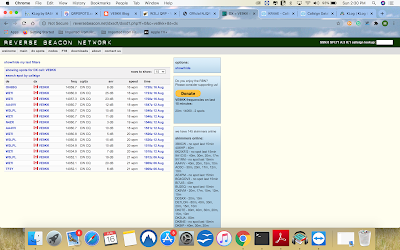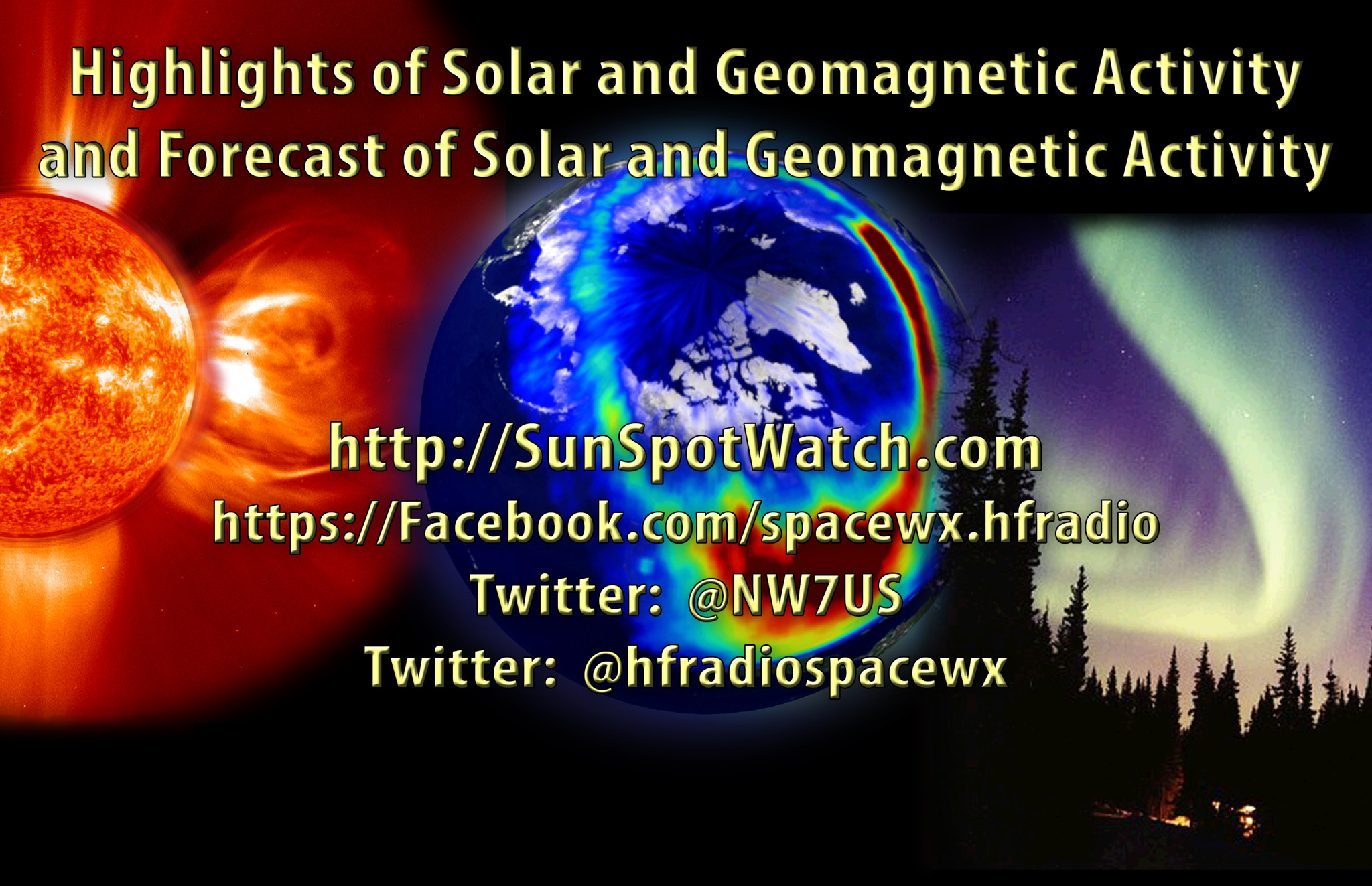 Ham College 68
Ham College 68
Ham College episode 68 is now available for download.
Extra Class Exam Questions – Part 6.
E1F Miscellaneous rules: external RF power amplifiers, prohibited communications, spread spectrum, auxiliary stations, Canadian amateurs operating in the U.S., special temporary authority, control operator of an auxiliary station.
57:10
George Thomas, W5JDX, is co-host of AmateurLogic.TV, an original amateur radio video program hosted by George Thomas (W5JDX), Tommy Martin (N5ZNO), Peter Berrett (VK3PB), and Emile Diodene (KE5QKR). Contact him at [email protected].
 LHS Episode #364: The Weekender LV
LHS Episode #364: The Weekender LV

It's time once again for The Weekender. This is our bi-weekly departure into the world of amateur radio contests, open source conventions, special events, listener challenges, hedonism and just plain fun. Thanks for listening and, if you happen to get a chance, feel free to call us or e-mail and send us some feedback. Tell us how we're doing. We'd love to hear from you.
73 de The LHS CrewAudio Player
Russ Woodman, K5TUX, co-hosts the Linux in the Ham Shack podcast which is available for download in both MP3 and OGG audio format. Contact him at [email protected].
 Issue with my feed line.
Issue with my feed line.
 |
| Troubling reading of coax |
 |
| Faulty PL259 |
Last week I posted about a wonky SWR reading I was getting and I figured it may be the result of a loose PL259. The issue returned again but not as bad last week. Since moving my Endfed antenna to be able to extend the wire the coax was also moved and now has to be buried. I needed to place the coax in some PVC conduit and not direct buried underground. It was a nice day and I decided to place the coax in the PVC conduit. While I had the coax disconnected from the Endfed antenna to feed it through the PCV conduit I thought I would connect my Fluke multimeter to the coax. With both ends of the coax disconnected, I placed the multimeter leads across the centre and barrel of the PL259 just to make sure my reading was "OL" and low and behold it was not!
 |
| Outdoor soldering station. |
Mike Weir, VE9KK, is a regular contributor to AmateurRadio.com and writes from New Brunswick, Canada. Contact him at [email protected].
 Hunting For NDBs in CLE259
Hunting For NDBs in CLE259
| YPM-274 Pikangikum, ON (ve3gop) |
It's CLE time again!
'CLE's are 'Co-ordinated Listening Events, and NDB DXers around the world focus their listening time on one small slice of the NDB spectrum.
This time the hunting ground is the 50kHz slice from 270.0 - 319.9 kHz. kHz
A worthy target for listeners in North America is YPM (274Hz) in Pikangikum, in western Ontario. YPM has been logged from coast-to-coast and out to Hawaii. Listen for YPM's upper sideband on 274.361kHz with your receiver in the CW mode.
When tuning for NDBs, put your receiver in the CW mode and listen for the NDB's CW identifier, repeated every few seconds. Listen for U.S. NDB identifiers approximately 1 kHz higher or lower than the published transmitted frequency since these beacons are modulated with a 1020 Hz tone approximately.
For example, 'AA' near Fargo, ND, transmits on 365 kHz and its upper sideband CW identifier is tuned at 366.025 kHz while its lower sideband CW ident can be tuned at 363.946 kHz. Its USB tone is actually 1025 Hz while its LSB tone is 1054 Hz.
Often, one sideband will be much stronger than the other so if you don't hear the first one, try listening on the other sideband.
Canadian NDBs normally have an USB tone only, usually very close to 400 Hz. They also have a long dash (keydown) following the CW identifier.
All NDBs heard in North America will be listed in the RNA database (updated daily) while those heard in Europe may be found in the REU database. Beacons heard outside of these regions will be found in the RWW database. These databases have recently been re-vamped and are slicker than ever before!
From CLE coordinator Brian Keyte (G3SIA), comes the following CLE info:
Hello all
Here are brief details for our 259th co-ordinated listening event next weekend.
It spans a 50 kHz frequency range - about three times wider than usual.
In that range, the Rxx database is showing about 200 active NDBs located in
Europe, 135 in North America, 35 in Oceania and about 250 more, scattered
in other parts of the World.
Days: Friday 28 August – Monday 31 August
Times: Start and end at midday, your LOCAL time
Range: 270.0 - 319.9 kHz (NDB signals only)
Part of the frequency range also has DGPS signals among the NDBs.
We last listened on these frequencies in CLE243 in April 2019.
Any first-time CLE logs will be very welcome, as always.
Please look out for our Final Details on the NDB List website, with full advice on log making, etc.,
in a few days.
Brian and Joachim
-----------------------------------------------------------------
From: Brian Keyte G3SIA ndbcle'at'gmail.com
Location: Surrey, SE England (CLE coordinator)
-----------------------------------------------------------------
These listening events serve several purposes. They:
• determine, worldwide, which beacons are actually in service and on-the-air so the newly-re-vamped Rxx online database can be kept up-to-date
• determine, worldwide, which beacons are out-of-service or have gone silent since the last CLE covering this range
• will indicate the state of propagation conditions at the various participant locations
• will give you an indication of how well your LF/MF receiving system is working
• give participants a fun yet challenging activity to keep their listening skills honed
Final details can be found at the NDB List website, and worldwide results, for every participant, will be posted there a few days after the event.
The NDB List Group is a great place to learn more about the 'Art of NDB DXing' or to meet other DXers in your region. There is a lot of good information available there and new members are always very welcome. As well, you can follow the results of other CLE participants from night to night as propagation is always an active topic of discussion.
You need not be an NDB List member to participate in the CLEs and all reports, no matter how small, are of much value to the organizers.
Remember - 'First-time' logs are always VERY welcome!
Reports may be sent to the NDB List Group or e-mailed to CLE co-ordinator, Brian Keyte (G3SIA), whose address appears above. If you are a member of the group, all final results will also be e-mailed and posted there.
Please ... give the CLE a try ... then let us know what NDB's can be heard from your location! Your report can then be added to the worldwide database to help keep it up-to-date.
Have fun and good hunting!
Steve McDonald, VE7SL, is a regular contributor to AmateurRadio.com and writes from British Columbia, Canada. Contact him at [email protected].
 LHS Episode #363: Too Hot
LHS Episode #363: Too Hot

Welcome to the 363rd installment of Linux in the Ham Shack. In this episode, the hosts discuss some big changes for the show, Google and 6GHz, an upcoming contest for portable operators, identifying and dealing with HF noise, Warpinator, GhostBSD, Bitcoin and much more. Thank you for listening and have a spectactular week.
73 de The LHS Crew
Russ Woodman, K5TUX, co-hosts the Linux in the Ham Shack podcast which is available for download in both MP3 and OGG audio format. Contact him at [email protected].
 Weekly Propagation Summary – 2020 Aug 24 16:10 UTC
Weekly Propagation Summary – 2020 Aug 24 16:10 UTC
Here is this week’s space weather and geophysical report, issued 2020 Aug 24 0151 UTC.
Highlights of Solar and Geomagnetic Activity 17 – 23 August 2020
Solar activity was very low for the highlight period. The largest flare was a B3.9 on 19 Aug from Region 2772 (N18, L=296, class/area Cro/30 on 19 Aug). There were no Earth-directed CMEs observed during the period.
No proton events were observed at geosynchronous orbit.
The greater than 2 MeV electron flux at geosynchronous orbit was at normal to moderate levels for the highlight period.
Geomagnetic field activity was at quiet to unsettled levels during the period with weak influences from coronal hole high speed streams.
Forecast of Solar and Geomagnetic Activity 24 August – 19 September 2020
Solar activity is expected to be very low for the outlook period.
No proton events are expected at geosynchronous orbit.
The greater than 2 MeV electron flux at geosynchronous orbit is expected to be at moderate to high levels on 02 – 09 Sep due to recurrent coronal hole high speed stream influences. The remainder of the period is expected to be at normal to moderate levels.
Geomagnetic field activity is expected to be at unsettled levels on 24 – 26 Aug, 28 Aug – 02 Sep due to recurrent coronal hole high speed stream influences. The remainder of the outlook period is expected to be at quiet levels.
Don’t forget to visit our live space weather and radio propagation web site, at: http://SunSpotWatch.com/
Live Aurora mapping is at http://aurora.sunspotwatch.com/
If you are on Twitter, please follow these two users: 1. https://Twitter.com/NW7US 2. https://Twitter.com/hfradiospacewx
– – – – – – – – – – – – –
Be sure to subscribe to our space weather and propagation email group, on Groups.io
https://groups.io/g/propagation-and-space-weather
Spread the word!
– – – – – – – – – – – – –
Links of interest:
+ Amazon space weather books: http://g.nw7us.us/fbssw-aSWSC
+ https://Twitter.com/NW7US
+ https://Twitter.com/hfradiospacewx
Space Weather and Ham Radio YouTube Channel News:
I am working on launching a YouTube channel overhaul, that includes series of videos about space weather, radio signal propagation, and more.
Additionally, I am working on improving the educational efforts via the email, Facebook, YouTube, Tumblr, and other activities.
You can help!
Please consider becoming a Patron of these space weather and radio communications services, beginning with the YouTube channel:
https://www.patreon.com/NW7US
The YouTube channel:
https://YouTube.com/NW7US
..
Visit, subscribe: NW7US Radio Communications and Propagation YouTube Channel
 Skunked in the 2020 NJQRP Skeeter Hunt!
Skunked in the 2020 NJQRP Skeeter Hunt!
 |
| The setup |
 |
| Just in case it rained |
The weather report was correct and the skies cleared and things looked just great for operating outdoor. For my set up I was going to use my Elecraft KX3 that I put together from a kit, battery power, Palm mini paddle and finally the antenna was a mag loop. I was on checking out 20m to see how it was sounding before the contest. It was not all that great but I was coping some station so the only thing to do now was to wait for the contest to start.
 |
| My QRP signal was being heard. |
To make a long story short I was on for over 21/2 hours and I did hear some skeeter station but only at the noise floor and they were soon gone. I had my Mac laptop with me and I was checking and found some spots but I was just not able to hear ANYTHING! I did check the Reverse Beacon Network to see if my QRP CQ was being heard and it was all the way in Finland as OH6GB heard my signal.
My score for the contest was a big fat ZERO but I did get out, had my KX3 running and had a nice time outside.
Mike Weir, VE9KK, is a regular contributor to AmateurRadio.com and writes from New Brunswick, Canada. Contact him at [email protected].














